Halo Display, Oslo, Norway ~ December 16, 2007
Halo Display, Oslo, Norway ~ December 16, 2007
On December 16, 2007, the skies above Oslo, Norway, were adorned with a breathtaking display of atmospheric optics known as a halo display. This phenomenon, caused by the interaction of light with ice crystals in the atmosphere, created a mesmerizing spectacle that captivated observers. The diamond dust display covered a wide area of approximately 30-40 kilometers, showcasing various prominent features.
The Main Aspects of the Display
Johannes Lillegaard, an avid sky watcher, managed to capture the essence of the halo display in three stunning images. These images showcased several key elements of the phenomenon:
- Upper Tangent Arc: A dominant "V" shaped upper tangent arc adorned the sky, creating a striking visual effect.
- Sundogs: Bright sundogs, also known as parhelia, appeared on either side of the sun, casting a beautiful glow.
- 22° Halo: A circular halo with a radius of 22 degrees encircled the sun, adding to the ethereal atmosphere.
- Parhelic Circle: A rare optical phenomenon known as a parhelic circle was observed, forming a complete circle around the sun.
- Sun Pillars: Both upper and lower sun pillars added to the spectacle, extending vertically from the sun.
As observers moved farther from the sun, additional captivating features came into view:
- Supralateral Arc: A colorful supralateral arc emerged, positioned further away from the sun compared to the 22° halo.
- 46° Halo: The rarely seen 46° circular halo appeared, shining brightly in the outer regions of the display.
Unusual Halos
The halo display in Oslo showcased some unique and rarely observed atmospheric optics phenomena:
- Moilanen Arc: Steinar Midtskogen managed to capture a rare Moilanen arc in his images. This "V" shaped arc appeared above the sun and halfway towards the 22° halo. It is speculated that this arc was formed by ice crystals nucleated by nearby ski-slope snow machines, located approximately 1.5 kilometers north of the observation site.
- Parry Arc: Signe Strøm Flugsrud's images unveiled a distinct "V" shaped sunvex Parry arc positioned above the upper tangent arc, mirroring its shape and adding another layer of complexity to the display.
Outer Arcs and Solar Elevation
As the display extended outward from the sun, two specific phenomena caught the attention of observers:
- Supralateral Arc: Images captured by Signe Strøm Flugsrud and Odd-Tore Saugerud revealed that the outer arcs, located twice as far from the sun as the 22° halo, comprised a combination of a supralateral arc and the rarely seen 46° circular halo. The supralateral arc consistently touched the circumzenithal arc, creating a visually stunning effect.
- 46° Halo: The lower arc observed was identified as the 46° halo. Its separation from the supralateral arc varied based on solar elevation, providing a unique opportunity for observers to witness them spaced apart.
Subhorizon Arcs
Odd-Tore Saugerud, situated near Oslo's Kolsås, managed to capture stunning images of low sun halos caused by diamond dust in the valley. These images showcased several distinct features:
- Lower Half of the 22° Halo: The lower half of the 22° halo became visible, casting its ethereal glow in the sky.
- Lower Tangent Arc: A narrow inverted "V" shape known as a lower tangent arc formed just above the lower half of the 22° halo.
- Lower Sun Pillar: An intense and narrow lower sun pillar appeared above the lower tangent arc, contributing to the overall visual spectacle.
- Subparhelia: The arms of the subparhelia linked upwards to the sundogs, completing the intricate composition of the display.
In conclusion, the halo display observed in Oslo, Norway on December 16, 2007, was a remarkable atmospheric optics event that showcased a wide range of captivating features. From the dominant upper tangent arc to the rare Moilanen and Parry arcs, as well as the supralateral arc and 46° halo in the outer regions, this display left observers in awe of the wonders of nature. The subhorizon arcs added another layer of complexity to the spectacle, providing a visual feast for those lucky enough to witness it.
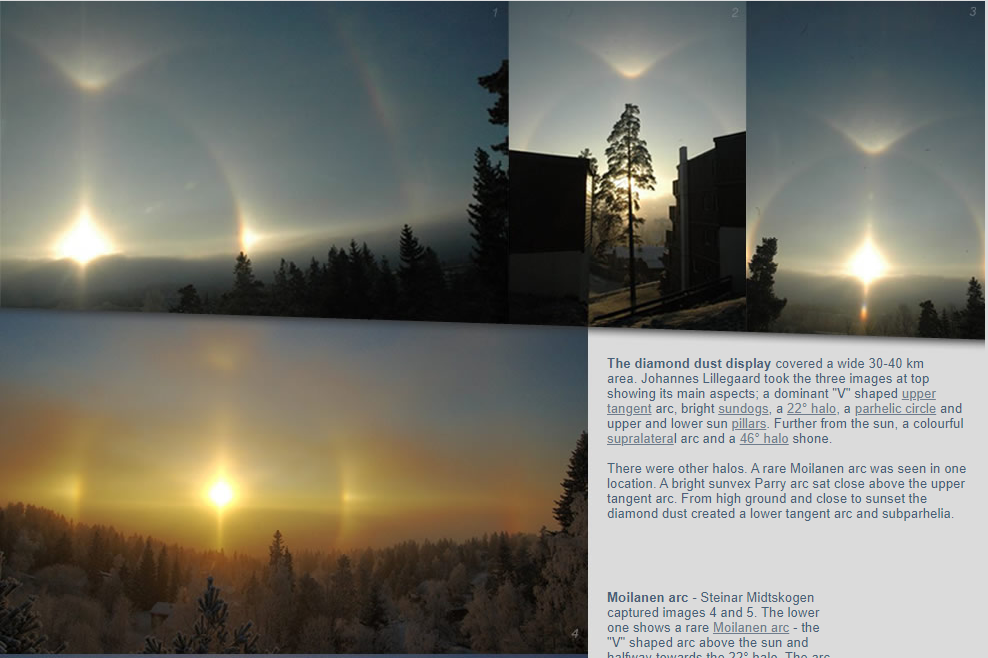
The diamond dust display covered a wide 30-40 km
area. Johannes Lillegaard took the three images at top showing its main aspects; a dominant "V" shaped upper tangent arc, bright sundogs, a 22° halo, a parhelic circle and upper and lower sun pillars. Further from the sun, a colourful supralateral arc and a 46° halo shone.
There were other halos. A rare Moilanen arc was seen in one location. A bright sunvex Parry arc sat close above the upper tangent arc. From high ground and close to sunset the diamond dust created a lower tangent arc and subparhelia.
Moilanen arc - Steinar Midtskogen captured images 4 and 5. The lower one shows a rare Moilanen arc - the "V" shaped arc above the sun and halfway towards the 22° halo. The arc was possibly made by crystals nucleated by ski-slope snow machines 1.5 km to the north.
Parry arc - Signe Strøm Flugsrud's images (6,7) show the "V" shaped sunv
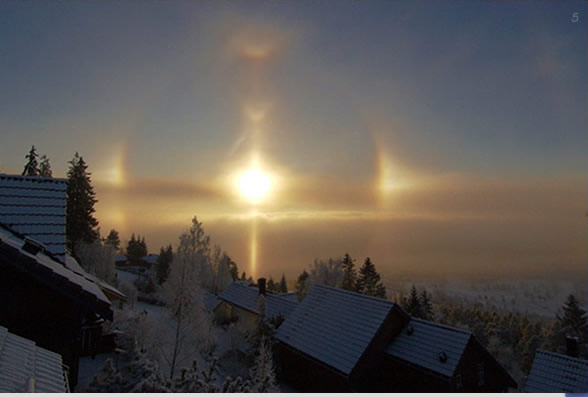
Moilanen arc - Steinar Midtskogen captured images 4 and 5. The lower one shows a rare Moilanen arc - the "V" shaped arc above the sun and halfway towards the 22° halo. The arc was possibly made by crystals nucleated by ski-slope snow machines 1.5 km to the north.
Parry arc - Signe Strøm Flugsrud's images (6,7) show the "V" shaped sunvex Parry arc above the upper tangent arc and mirroring its form.
Supralateral arc & 46° halo - Image (7) and that that of Odd-Tore Saugerud (8) reveal that the outer arcs twice as far from the sun as the 22° halo were a combined supralateral arc and the more rarely seen 46° circular halo. The supralateral arc always touches the (upward curving in images 7,8) circumzenithal arc. The lower arc is the 46° halo. Its separation from the supralateral arc varies with solar elevation and the low sun presented
a good opportunity to see them spaced
well apart.
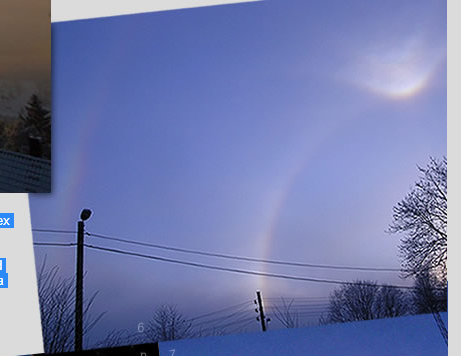
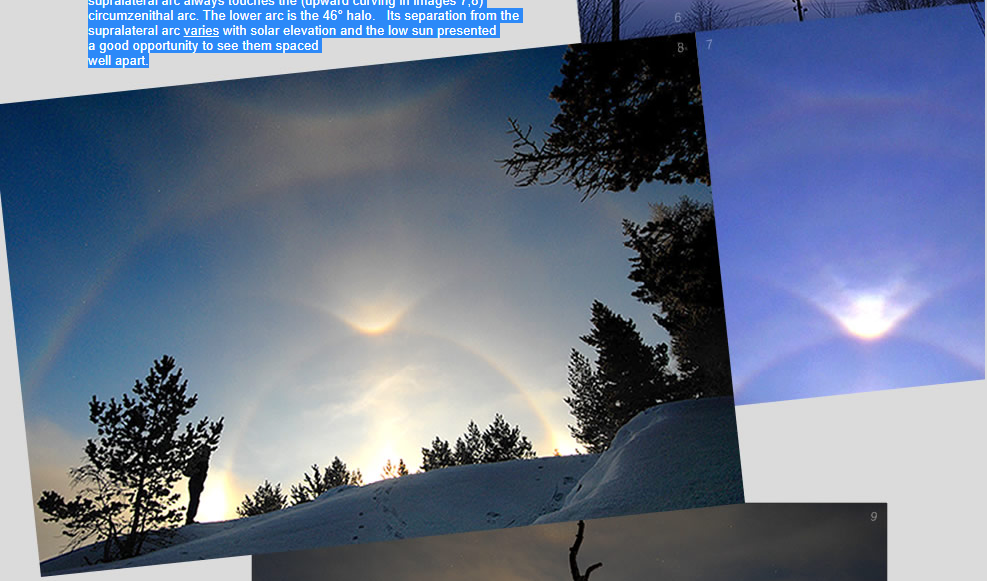
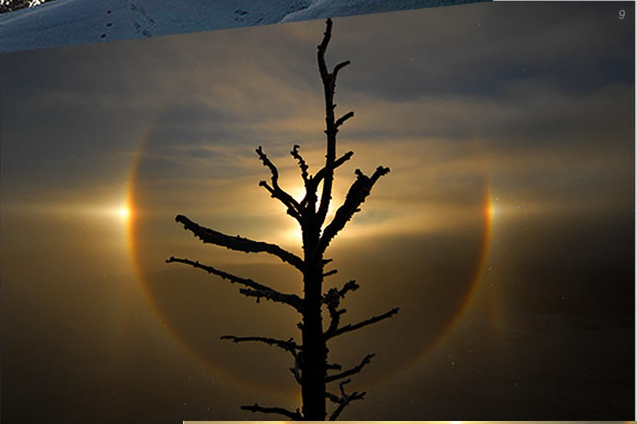
Subhorizon arcs
Odd-Tore Saugerud captured these very low sun halos at Kolsås near Oslo. Diamond dust in the valley shows the lower half of the 22° halo and the narrow inverted V of a lower tangent arc. Above it is a narrow and intense lower sun pillar. The arms of are subparhelia link upwards to the sundogs.
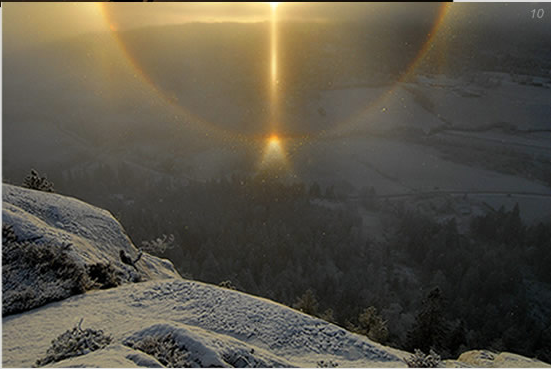
Images (1)(2)(3) ©Johannes Lillegaard - Images (4)(5) ©Steinar Midtskogen, (6)(7) ©Signe Strøm Flugsrud, (8)(9)(10) ©Odd-Tore Saugerud.
Note: this article has been automatically converted from the old site and may not appear as intended. You can find the original article here.
Reference Atmospheric Optics
If you use any of the definitions, information, or data presented on Atmospheric Optics, please copy the link or reference below to properly credit us as the reference source. Thank you!
-
<a href="https://atoptics.co.uk/blog/halo-display-oslo-norway-december-16-2007/">Halo Display, Oslo, Norway ~ December 16, 2007 </a>
-
"Halo Display, Oslo, Norway ~ December 16, 2007 ". Atmospheric Optics. Accessed on November 26, 2024. https://atoptics.co.uk/blog/halo-display-oslo-norway-december-16-2007/.
-
"Halo Display, Oslo, Norway ~ December 16, 2007 ". Atmospheric Optics, https://atoptics.co.uk/blog/halo-display-oslo-norway-december-16-2007/. Accessed 26 November, 2024
-
Halo Display, Oslo, Norway ~ December 16, 2007 . Atmospheric Optics. Retrieved from https://atoptics.co.uk/blog/halo-display-oslo-norway-december-16-2007/.